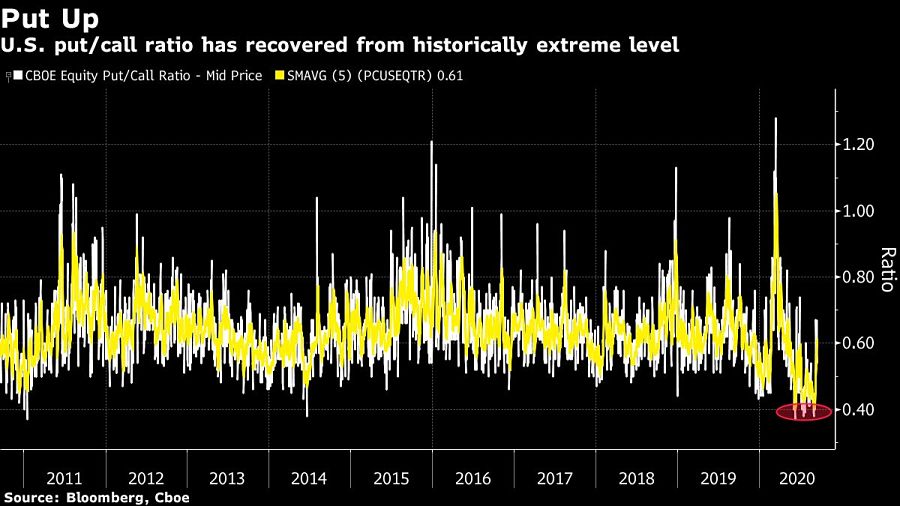

The recent pullback in U.S. stocks could be close to an end if history is a guide, according to strategists at Goldman Sachs Group Inc. and Deutsche Bank.
Its magnitude has matched a “typical” sell-off in the S&P 500 since the financial crisis, albeit at a faster pace, a team led by Goldman’s David Kostin wrote in a note Friday. And options positioning -- at the core of the weakness -- has normalized, their counterparts at Deutsche, including Srineel Jalagani, noted the same day.
“Despite the sharp sell-off in the past week, we remain optimistic about the path of the U.S. equity market in coming months,” the Goldman strategists wrote. “Since the financial crisis, the typical S&P 500 pullback of 5% or more has lasted for 20 trading days and extended by 7% from peak to trough, matching the magnitude of the most recent pullback if not the speed.”
A reassessment of historically high equity valuations and volatility in options markets has sent the S&P 500 down about 7% from its record close on Sept. 2, though it remains almost 50% above its March low. The Nasdaq 100 is off 11%, after investors questioned whether a rally in the tech-heavy gauge might be too frothy.

Meanwhile, the Deutsche team focused on the impact of the options market, using a metric that looks at the number of bearish contracts relative to bullish ones. That measure had fallen to the bottom of its 10-year range -- indicating an extreme level of positive sentiment -- but after the correction has already recovered to “about average” levels, the team said.
“Historically, corrections in the put-call ratio have tended to have sharp but short-lived market impacts,” the strategists wrote.
Still, both teams pointed to the U.S. elections as the key source of uncertainty for markets ahead.
“Investors still have to contend with the upcoming macro event of the U.S. presidential elections,” the Deutsche strategists warned. “With a likely unprecedented volume of mail-in ballots, prospects for volatility enduring post-election day are high.”

The leadership changes coming in June, which also include wealth management and digital unit heads, come as the firm pushes to offer more comprehensive services.

Strategist sees relatively little risk of the university losing its tax-exempt status, which could pose opportunity for investors with a "longer time horizon."

As the next generation of investors take their turn, advisors have to strike a fine balance between embracing new technology and building human connections.

IFG works with 550 producing advisors and generates about $325 million in annual revenue, said Dave Fischer, the company's co-founder and chief marketing officer.

Five new RIAs are joining the industry coalition promoting firm-level impact across workforce, client, community and environmental goals.
RIAs face rising regulatory pressure in 2025. Forward-looking firms are responding with embedded technology, not more paperwork.
As inheritances are set to reshape client portfolios and next-gen heirs demand digital-first experiences, firms are retooling their wealth tech stacks and succession models in real time.
